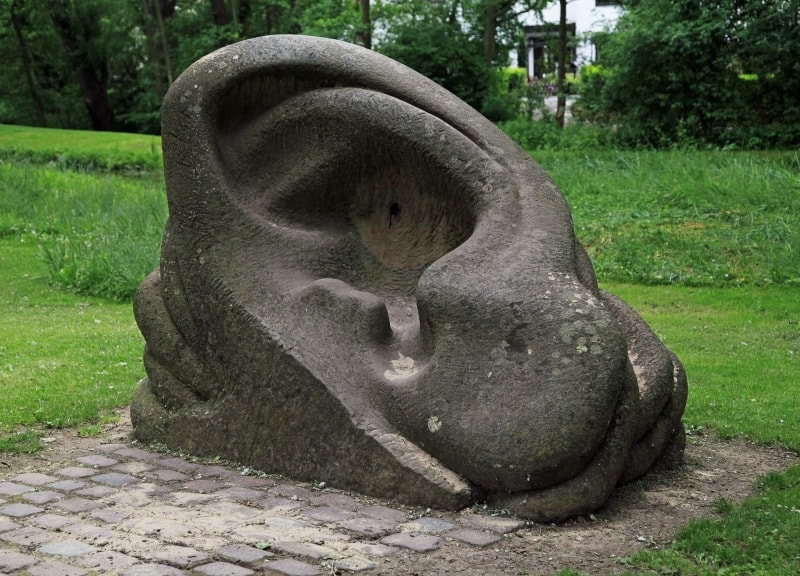What is Noise in NIHL cases?

As part of the Parklane Plowden Industrial Disease Group’s series on the ‘Fundamentals of Industrial Disease’, Jim Hester considers what the term ‘Noise’ actually means in the context of a NIHL claim and how it is measured.
Noise in a colloquial sense might mean sound which is unwanted. For example, noise coming from a busy road. A dictionary definition describes it as a sound, especially which is loud, unpleasant or causes disturbance.
However, in noise induced hearing loss claims what is relevant is not whether the noise is pleasing to the ear or not, but it is the effect that it has on the ear. There are two factors which are of particular interest:
- The level of the noise;
- The duration of noise.
The Instantaneous Noise Level
In normal day to day life most of the noise which we come into contact with, someone speaking or noise from a particular machine, will be transmitted at a number of frequencies. The human ear can hear from about 20 Hz to 20 kHz, and the vast majority of noises which we hear are made up of a mix of frequencies.
So how are noise levels consistently measured and compared to each other when each noise is made up of a different range of frequencies?
A sound level meter will measure the noise levels across a range of frequencies typically between about 30 Hz and 10 kHz. A weighting system is then applied so that the frequencies which are most important for the human ear’s ability to hear are given the greatest weight – especially those between 1 and 4 kHz. Very low or very high frequencies which have little bearing on human ability to hear are given a lower weighting. The intention is the mimic how the human ear actually hears any such noise.
The scale which is used (so that it is consistent) is the (A) weighting system. So, noise levels will be written as, for example, ‘85 dB (A)’ – that is 85 decibels using the (A) weighting system.
So at any point in time, the level of noise can be measured by assessing the different frequencies at which that noise occurs, assessing the level of the various frequencies, and then applying the (A) weighting system. Of course, this is something which sound level meters do automatically and quickly.
The Decibel Range
At this point it should be pointed out that the decibel scale is a logarithmic one. So for every 3 decibels that the noise level increases then the noise level doubles. Likewise for every 3 decibels noise levels are reduced, the noise level halves. The result is that whilst 93 dB (A) does not look to be much louder than 90 dB (A), 93 dB (A) is actually double 90 dB (A).
It is the case that for every 10 dB rise in hearing the noise by a factor of 10. So 30 dB is 10 times louder than 20 dB. However, the human ear does not perceive such a 10-fold increase and so a 10 dB rise in noise level may only appear as a slight rise in noise levels to the human listener.
70 dB (A) is not 70% of the level of 100 dB (A), but in fact 1/ 1000th.
Duration of Noise Level – the Daily Noise Level
The important measurement for NIHL cases is not the instantaneous noise level at any one point in time, but something which is called the ‘daily noise level’.
The way that daily noise levels are assessed is by taking the actual daily noise exposure over the course of the individual’s working day and then averaging it, as if there were a constant level of noise for an 8- hour period (to represent a standard working day).
The way that this daily noise level is written is usually “dB (A) lep,d”. So a daily noise level might be ‘85 dB (A) lep,d’.
The reason why different noise levels and different durations of exposure can be done so compared is due to a concept known as noise equivalence.
As an example someone: was who exposed to a an average level of noise of 90 dB (A) for 8 hours would have a daily noise level of 90 dB (A) lep,d.
However, someone who is exposed to an average of 93 dB (A) for 4 hours would also have a daily noise level of 90 dB (A) lep,d (remembering from above that 93 dB (A) is double 90 dB (A)).
Likewise someone who is exposed to 96 dB (A) for 2 hours would be exposed to a daily noise level of 90 dB (A) lep,d.
Someone who was exposed to an average of 87 dB (A) would need to have 16 hours exposure to reach 90 dB (A) lep,d.
Of course such simple calculations are unlikely to be encountered in real life and so the expert engineer will be required to undertake the complicated calculations necessary (the formula is included in the Schedule to the Noise at Work Regulations 1989). However, since different noise levels can be considered to be ‘equivalent’, any actual exposure can be converted to the equivalent of an 8-hour period of constant noise exposure. It is this level that will determine whether there has been a breach of duty.
What can be seen by this is that for very high levels of noise relatively short periods of exposure are required. As an example, if an individual was using a jackhammer which exposes the user to 100 dB (A) – which would not be uncommon – it would take about 45 minutes use before being exposed to 90 dB (A) lep,d.
It is also possible to assess the levels of noise to which a particular worker is exposed by the worker wearing something called a ‘dosimeter’. This is a noise meter which the individual wears. An individual might be asked to conduct his or her role wearing a dosimeter for 2 hours. Assuming that this 2-hour period is typical for the worker’s day-to-day role, then an average over that 2 hours can be obtained from the dosimeter and calculations undertaken to work out the daily noise level.
C-Weighting
C-weighting is generally not relevant to measurements in noise induced hearing loss cases (it is more appropriate for acoustic trauma cases), however, reference to it may be seen. C-weighting is essentially the same process as A-weighting (so taking the range of frequencies then applying a weighting to the same).
However, the human ear reacts in a different way at very high levels of noise than at lower levels. It is for these very high levels of noise which the C-weighting is used. So the Control of Noise at Work Regulations 2005 set a “Peak Action Level’ at 135 dB (C). C-weighting does not usually form a direct part of NIHL cases however.
Noise Emission Level – the lifetime exposure to noise
The final relevant noise measurement for noise induced hearing loss cases is what is called the Noise Immission Level (NIL). Essentially this is a calculation of an individual’s lifetime exposure to excessive levels of noise.
Calculation of the NIL (so an individual’s lifetime exposure to noise) is required so as to fulfil ‘Requirement 2 (R2)’ of the Coles Guidelines – there needs to be a sufficient lifetime exposure to noise to actually damage someone’s hearing. A short period of exposure, even if in breach of duty, is unlikely to cause any damage.
The NIL is written as “dB (A) NIL”, so someone’s NIL might be calculated as being ‘97 dB (A) NIL’.
Again, apart from in rare cases, unless admitted this would be something calculated by the engineer.
However, the NIL is essentially a calculation of the daily noise level an individual was exposed to multiplied by the period of time which the individual was exposed to that daily noise level (measured in years).
In reality, in many cases people will be exposed to differing levels of noise either with the same employer (as roles changed over the years/ or as equipment changed) or with multiple employers. It is normally a requirement for an engineer to be involved to calculate the NIL. However, it is possible for a lawyer with a degree of understanding of mathematics to estimate whether the noise levels combined with the period of exposure are likely to result in a NIL which is sufficiently high to bring a claim.
By way of indication: if someone was exposed to a daily noise level of 90 dB (A) lep,d, then to achieve an NIL of 90 dB (A) NIL would require only 1 year. For the same person exposed to 90 decibels on a daily level it would take 10 years to achieve a NIL of 100 dB (A) NIL. The two relevant Noise Immission Levels for the Coles guidelines (depending on the readings from the audiogram) at 90 and 100 dB (A) NIL. As seen above, there is a 10-fold difference in period of exposure to reach 100 dB (A) NIL rather than 90 dB (A) NIL.
An engineer will also calculate what percentage of the overall NIL is attributable to each defendant and any possible non-negligent noise exposure, so that an accurate apportionment may be reached.
Usually, following Note 7 of the Coles guidelines, any exposure below 85 dB (A) lep,d is disregarded when calculating the NIL.
Assessing Noise Levels – Evidence
As can be seen from all of the above it is vital to know what sources of noise the Claimant was exposed to throughout his or her working day. It is vital to know how long the Claimant was exposed to such sources of noise. As a starting point, the engineer needs the following information to complete necessary calculations:
- The source(s) of noise the Claimant was exposed to.
- How long he or she was exposed to such source(s) of noise on each day.
- For how long he or she was exposed to such noise (in years).
The evidence required for NIHL cases will be the subject of a later Article.
Pure Tone Audiograms
Pure tone audiograms (hearing tests) are the one exception to the general rule that noise is made up of noise at a number of frequencies. The whole point of a pure tone audiogram is to test the individual’s ability to hear at particular, exact frequencies.
Therefore, the audiometer plays sounds at precise frequencies to test an individual’s ability to hear at individual frequencies. Once one frequency is tested, then a different frequency is tested. An individual may have a threshold at 40 dB at 4 kHz, for example.
Readings from audiograms are therefore not weighted.
Summary
The reader may come across a number of different references to noise, being:
- Instantaneous noise level, weighted using A-weighting – for example 90 dB (A).
- Instantaneous noise level, weighted using C-weighting – for example 140 dB (C).
- Daily noise level – for example 90 dB (A) lep,d.
- Lifetime noise exposure, the Noise Immission Level (NIL) – for example 97 dB (A) NIL.
- Readings in a Pure Tone Audiogram at precise frequencies – for example 45 dB at 4 kHz.
Next in the ‘Fundamentals of Industrial Disease’ series will be an article discussing ‘What is an audiogram’.
Jim Hester is the Parklane Plowden Industrial Disease Group co-ordinator, and welcomes solicitors contacting him regarding representation in Industrial Disease cases, training regarding Industrial Disease from members of the Industrial Disease Group, or any other enquiries.
In the next webinar of the Industrial Disease ‘Law with Lunch’ series, Jim Hester will discuss, “De Minimis in Noise Induced Hearing Loss cases”. For more information and details of how to join this webinar on the 8th July, please email: Laura.Storr@parklaneplowden.co.uk.










